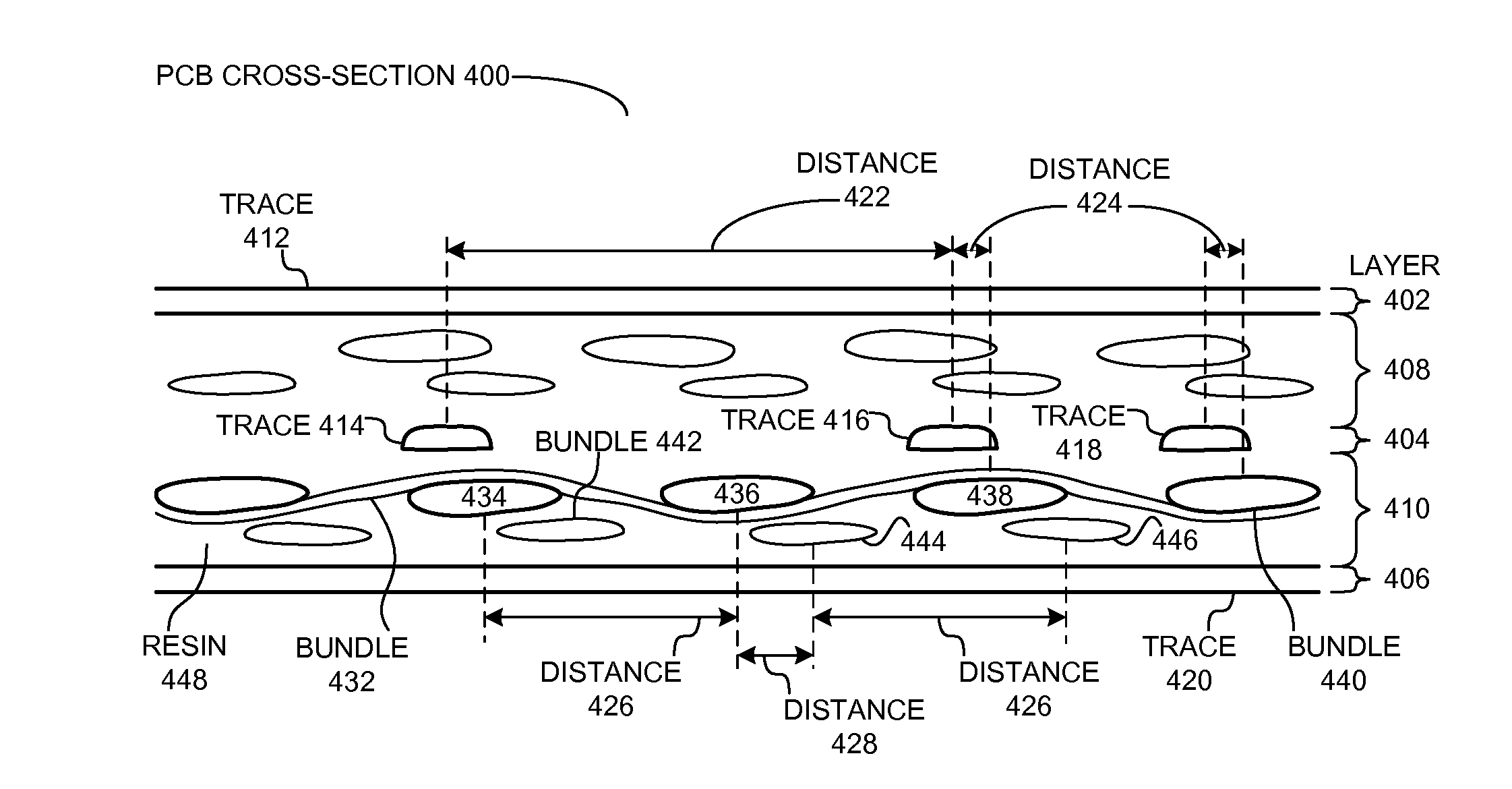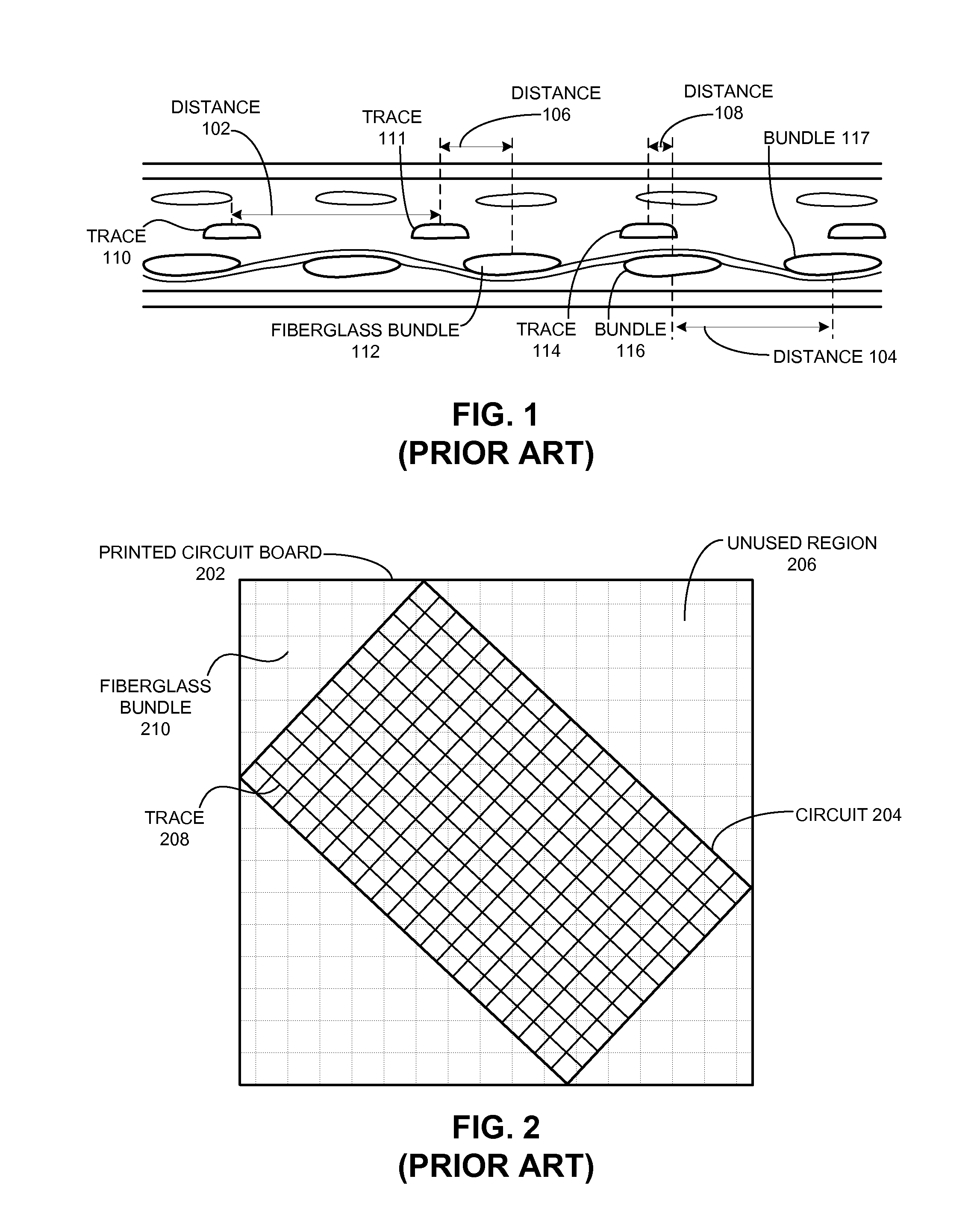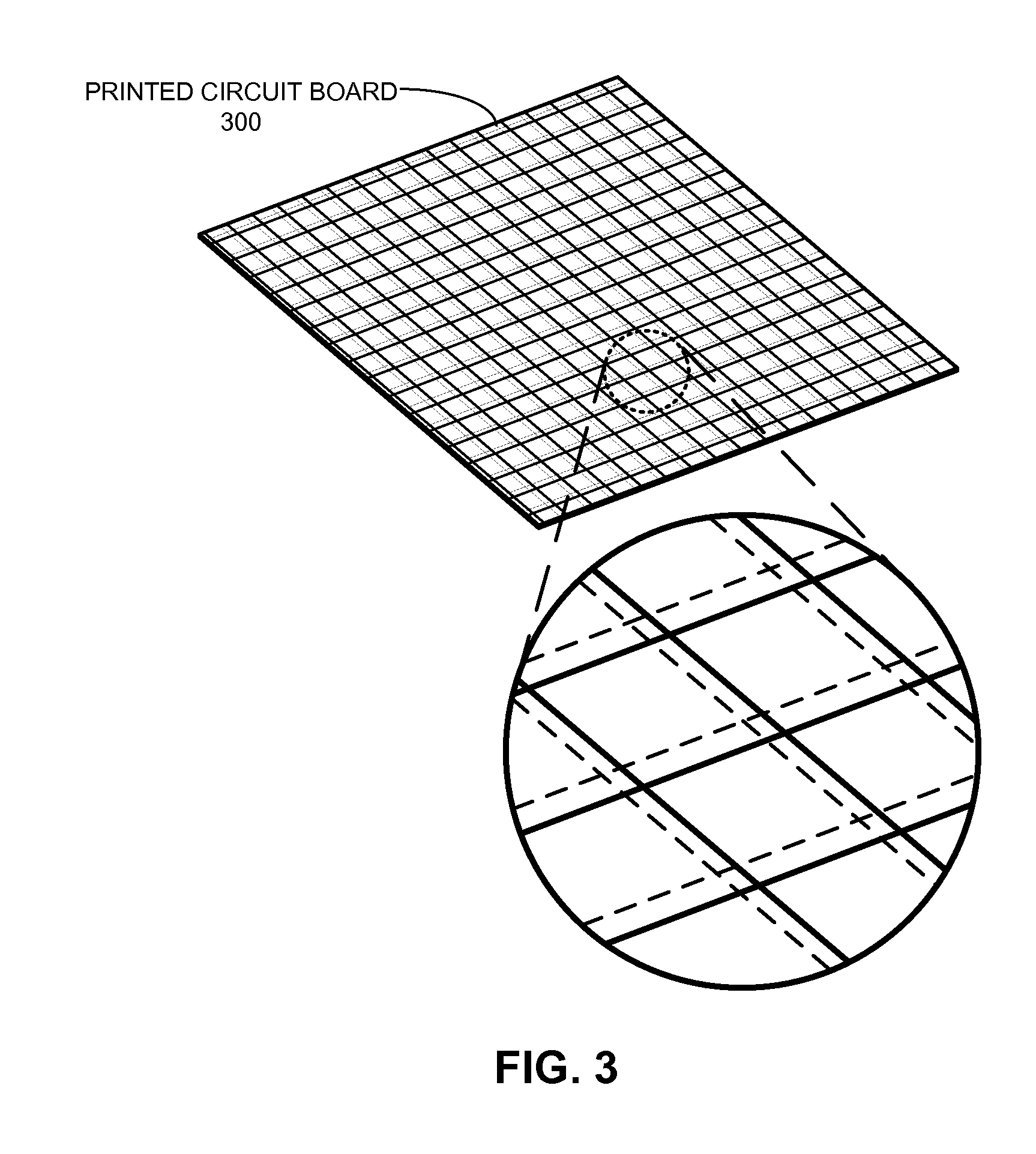Printed circuit board with low propagation skew between signal traces
a technology of printed circuit boards and signal traces, applied in the direction of printed circuit aspects, printed circuit manufacturing, conductive pattern formation, etc., can solve the problem that circuit devices that depend on signals to operate incorrectly, data rates in pcbs are skew between signals, and skew can still be a problem in pcbs, so as to achieve the effect of minimizing skew
- Summary
- Abstract
- Description
- Claims
- Application Information
AI Technical Summary
Benefits of technology
Problems solved by technology
Method used
Image
Examples
Embodiment Construction
[0026]The following description is presented to enable any person skilled in the art to make and use the embodiments, and is provided in the context of a particular application and its requirements. Various modifications to the disclosed embodiments will be readily apparent to those skilled in the art, and the general principles defined herein may be applied to other embodiments and applications without departing from the spirit and scope of the present disclosure. Thus, the present invention is not limited to the embodiments shown, but is to be accorded the widest scope consistent with the principles and features disclosed herein.
[0027]Typical printed circuit boards (PCBs) include a fiberglass weave within a laminate layer to electrically insulate communication signals that propagate across neighboring trace layers (i.e., to reduce capacitive coupling between the signal traces in the neighboring trace layers). However, as the performance of electronic components increases, even min...
PUM
| Property | Measurement | Unit |
|---|---|---|
| average separation distance | aaaaa | aaaaa |
| dielectric constant | aaaaa | aaaaa |
| dielectric constant | aaaaa | aaaaa |
Abstract
Description
Claims
Application Information
 Login to View More
Login to View More - R&D
- Intellectual Property
- Life Sciences
- Materials
- Tech Scout
- Unparalleled Data Quality
- Higher Quality Content
- 60% Fewer Hallucinations
Browse by: Latest US Patents, China's latest patents, Technical Efficacy Thesaurus, Application Domain, Technology Topic, Popular Technical Reports.
© 2025 PatSnap. All rights reserved.Legal|Privacy policy|Modern Slavery Act Transparency Statement|Sitemap|About US| Contact US: help@patsnap.com



